Nidal Moukaddam
RACER: An LLM-powered Methodology for Scalable Analysis of Semi-structured Mental Health Interviews
Feb 05, 2024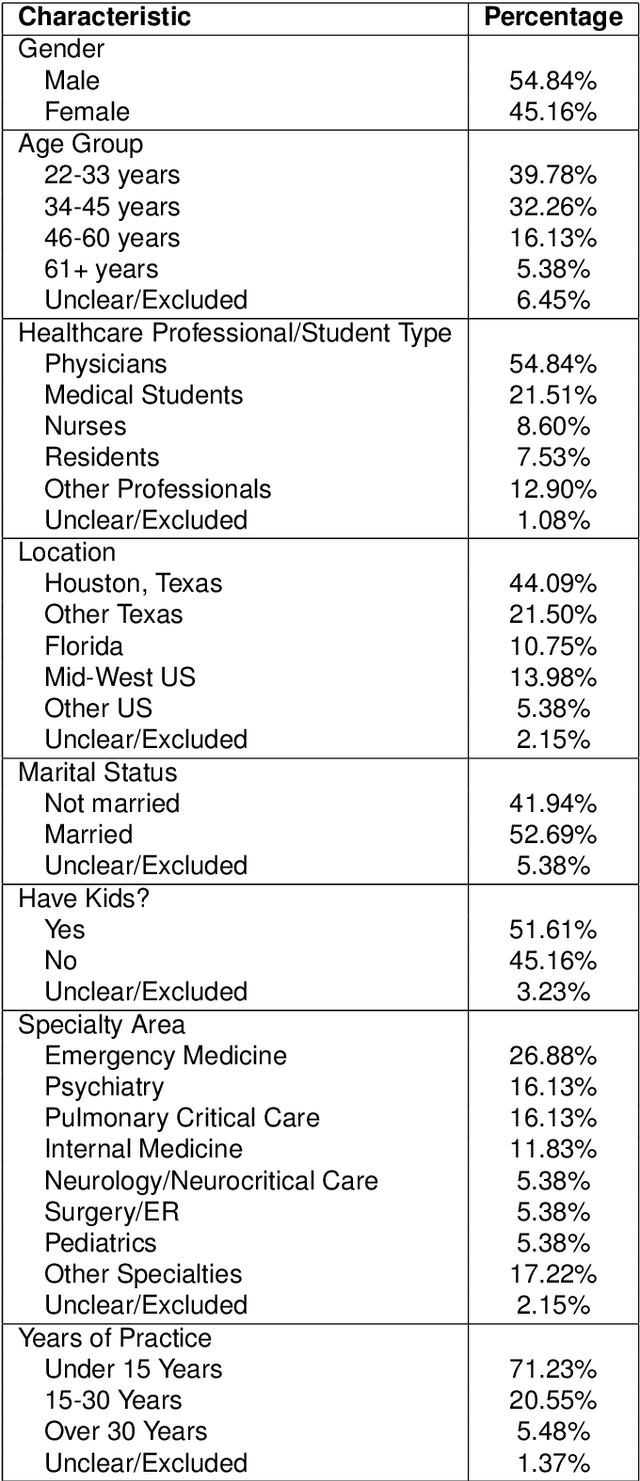
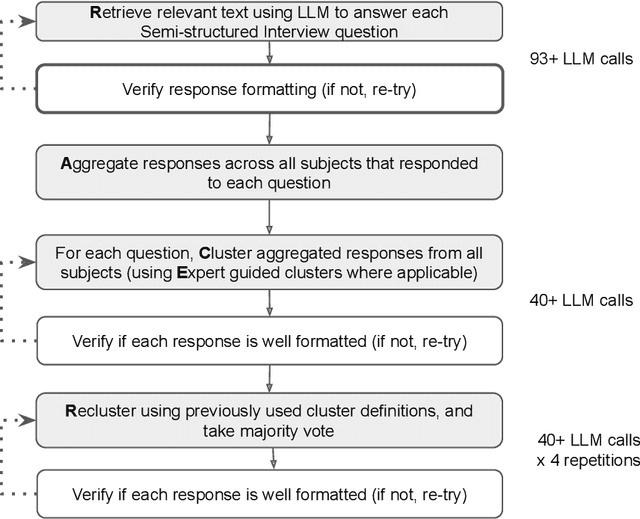
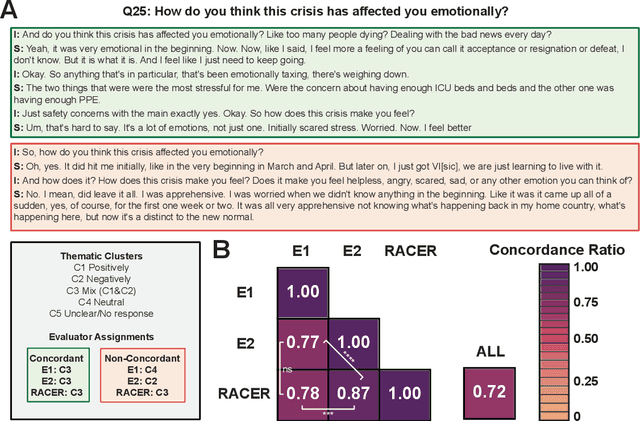
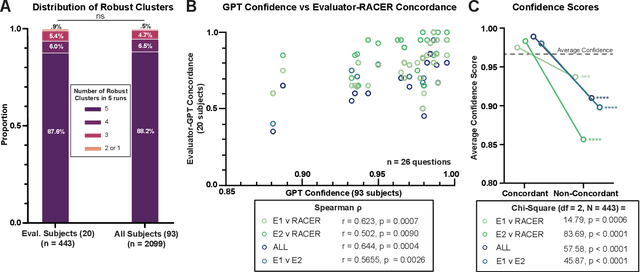
Abstract:Semi-structured interviews (SSIs) are a commonly employed data-collection method in healthcare research, offering in-depth qualitative insights into subject experiences. Despite their value, the manual analysis of SSIs is notoriously time-consuming and labor-intensive, in part due to the difficulty of extracting and categorizing emotional responses, and challenges in scaling human evaluation for large populations. In this study, we develop RACER, a Large Language Model (LLM) based expert-guided automated pipeline that efficiently converts raw interview transcripts into insightful domain-relevant themes and sub-themes. We used RACER to analyze SSIs conducted with 93 healthcare professionals and trainees to assess the broad personal and professional mental health impacts of the COVID-19 crisis. RACER achieves moderately high agreement with two human evaluators (72%), which approaches the human inter-rater agreement (77%). Interestingly, LLMs and humans struggle with similar content involving nuanced emotional, ambivalent/dialectical, and psychological statements. Our study highlights the opportunities and challenges in using LLMs to improve research efficiency and opens new avenues for scalable analysis of SSIs in healthcare research.
Dyadic Interaction Assessment from Free-living Audio for Depression Severity Assessment
Sep 08, 2022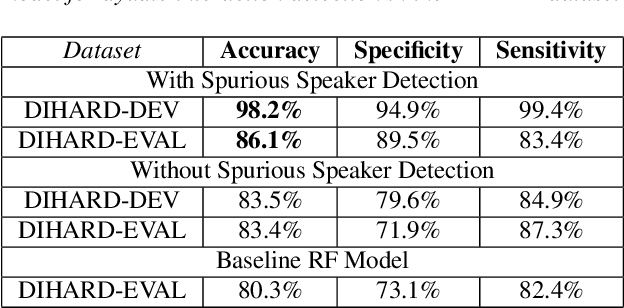

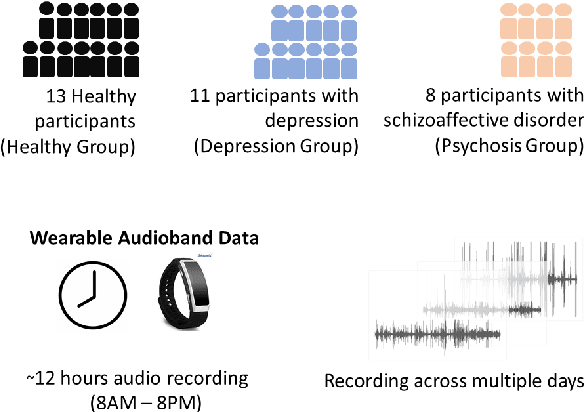
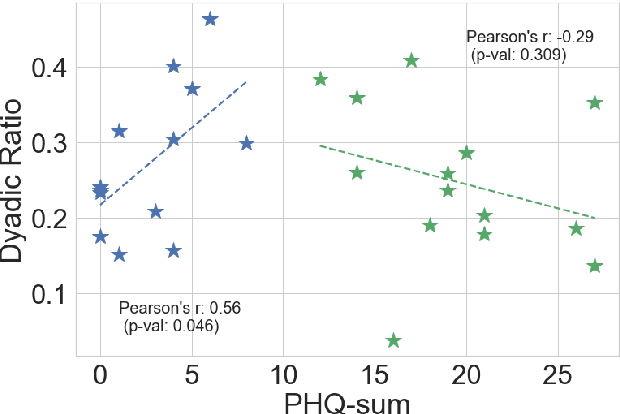
Abstract:Psychomotor retardation in depression has been associated with speech timing changes from dyadic clinical interviews. In this work, we investigate speech timing features from free-living dyadic interactions. Apart from the possibility of continuous monitoring to complement clinical visits, a study in free-living conditions would also allow inferring sociability features such as dyadic interaction frequency implicated in depression. We adapted a speaker count estimator as a dyadic interaction detector with a specificity of 89.5% and a sensitivity of 86.1% in the DIHARD dataset. Using the detector, we obtained speech timing features from the detected dyadic interactions in multi-day audio recordings of 32 participants comprised of 13 healthy individuals, 11 individuals with depression, and 8 individuals with psychotic disorders. The dyadic interaction frequency increased with depression severity in participants with no or mild depression, indicating a potential diagnostic marker of depression onset. However, the dyadic interaction frequency decreased with increasing depression severity for participants with moderate or severe depression. In terms of speech timing features, the response time had a significant positive correlation with depression severity. Our work shows the potential of dyadic interaction analysis from audio recordings of free-living to obtain markers of depression severity.
 Add to Chrome
Add to Chrome Add to Firefox
Add to Firefox Add to Edge
Add to Edge